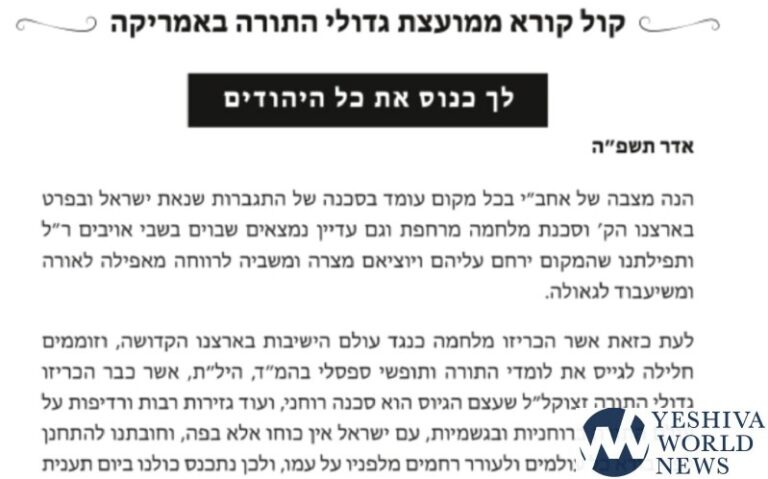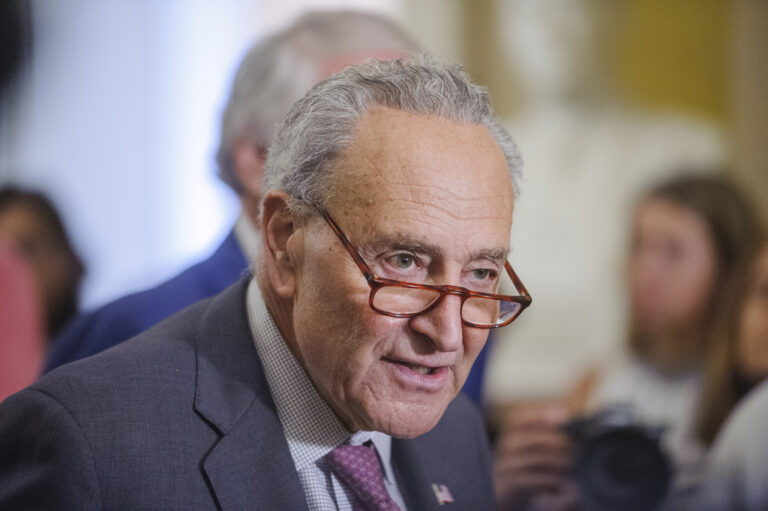 [By Rabbi Yair Hoffman]
[By Rabbi Yair Hoffman]
For some kehillos it is an easier task than for others. Hiring a rabbi is often a challenging endeavor, yet one that calls everyone to action. Opinions are bandied about and advice is dispensed freely.
“Let’s get someone younger who can bring in more people!”
“Nah, we need someone with life experience—a young guy can’t be expected to handle issues and advise on difficult realities.”
“What is it with this no-college business? Half the kehillah has advanced degrees!”
“What is this? A game show? Is this how we are choosing rabbanim nowadays?”
“I’m not voting. I am protesting and sitting this one out.”
These conversations and others like them are, no doubt, occuring at shuls across the country that are hiring new Rabbis. The question is: Are there guidelines to the process found in Shulchan Aruch or the poskim? Does halachic literature give us any insight into this undertaking? What about the responsa literature?
Importance
The Rambam (Hilchos Teshuvah 4:2) writes of the obligation to appoint a rav in every kehillah in Israel. He should be a “chacham gadol v’zakein v’yarei shamayim mi’n’urav, v’ahuv la’hem she’yehei mochiach l’rabbim u’machziram l’teshuvah.” This means that he must be great in wisdom, venerable, G d-fearing since his youth, beloved by the congregation so that he can castigate the masses and bring them to repentance. Many mefarshim explain that venerable, or zakein, does not necessarily denote age; it can refer to the wisdom of age acquired by in-depth Torah learning.
The Maharit Tzahalon (1559–1638, in his New Responsa Vol. II #133) writes that from the Rambam’s use of the term “tzarich,” we can derive that the members can be financially forced to make the hire. Indeed, he goes on to say that any congregation that does not hire a rav is in violation of a prohibition in the Torah, “Lo sihyeh adas Yisrael k’tzon asher ein lahem ro’eh”—let not the nation of Israel be like a flock with no shepherd. (See Bamidbar 27:15–17.)
The importance of a kehillah’s having a rav is seen in a letter that Rav Akiva Eiger writes to the city elders of Kempena (Igros Rebbe Akiva Eiger, letter 50) after their rav passed away. He explains that many essential institutions fall apart without a rabbi, even when there are many talmidei chachamim in the congregation. He suggests that one of the reasons some communities are hesitant to hire a rav is that they are afraid to appoint someone to whom they must be subservient in religious matters. Indeed, in Rav Akiva Eiger’s own will (Asher Atzaveh, page 535) he writes that the matter is of such urgency that he wanted a rav appointed to his kehillah within four weeks after his own death.
Rav Yaakov Kamenetsky, zt’l, was once asked whether it is preferable for a kehillah to have a rabbi or a doctor. He responded that it is preferable to have a rabbi. Why? Because it says in the Shulchan Aruch that it is forbidden to live in an area where there is no doctor. “A rabbi will ensure that there will be a doctor. A doctor, however, will not make sure that there is a rabbi.”
Paying The Rabbi
The Shulchan Aruch (O.C. 53:22) explains that in regard to a shaliach tzibbur, it is preferable to hire someone for money than to receive his services free. There are a number of reasons cited for this, some of which apply to a rabbi as well as a shaliach tzibbur. B’tzel HaChochmah (Vol. V, responsum #101) explains that a mitzvah that one pays for is preferable to one that is not paid for.
Who pays for the shaliach tzibbur and, presumably, the rabbi? The kehillah members, of course. But how is the cost apportioned? The Rema (53:23) explains that the conventional custom is to follow the protocols of the Maharam Padua: Half the costs should be borne by the entire membership, divided in equal fees, and the other half should be paid based upon a financial assessment. It is unclear whether these guidelines are followed nowadays, but it may give some halachic insight into how shul membership fees should be assessed. It is interesting to note that the Shulchan Aruch seems to be of the opinion that the entirety of the cost should be based upon financial assessment.
The Will Of The Membership
The Rema explains that a shaliach tzibbur should not pray “b’lo ratzon ha’kahal,” if it is against the will of the kehillah. If for some reason this has happened, the kehillah should not respond with Amen to his public berachos. The original source is the Agudah in Keitzad Mevorchim cited in the responsum of Rav Binyomin Ze’ev (163). This perhaps may also be a source for the notion that a rabbi should not be appointed if it is against the democratic will of the kehillah.
Is there ever foul play or illegitimacy in elections for a rabbi? The Chasam Sofer (Choshen Mishpat, responsum #160) discusses a case where there were four candidates for the position, and relatives of one of the candidates had bribed a number of members to vote for their relative. The Chasam Sofer ruled that the elections were invalid and that if there are witnesses that the rabbinical candidate was aware of the payoffs, he is invalidated as a rabbi until he does a complete teshuvah, repentance. Also, all those who received the bribe cannot vote in the next election.
Precedence Over A Chazzan
The Shulchan Aruch (53:24) discusses the preference of hiring a shaliach tzibbur over a rav if the rav is a talmid chacham. The Mor Uktziya writes that this was only back then, when not every person could actually daven. But nowadays, everyone is baki, fully proficient, in davening, so the rav is preferable even if he is not such a talmid chacham. Similarly, the Aruch HaShulchan concludes that, nowadays, hiring the rav is always the first priority above a chazzan or shaliach tzibbur. This has become the clear universal custom.
Age Requirements
Many cities in Europe had a Pinkas Ha’Ir—the guidelines and internal rules as to how the city was to conduct itself. The pinkas of Lithuania (Vaad 5521 #961) initially had a rule that no rabbi under the age of 30 could be hired. (Apparently, this did not work because a later pinkas changed this figure to “below the age of 20.”) Rav Chaim Ozer Grodzinsky, zt’l (Iggeres 428) was very much against this ruling because it would not permit anyone to serve as a rav before age 30. He repealed the ruling.
• • •
Clearly, we see that the many issues involved in hiring the contemporary rav have been addressed by the poskim and teshuvos of Torah literature. The phrase “hafoch bah, hafoch bah, d’kulah bah”—search it and search it, for all is contained in it—is as applicable to the modern rabbinic search as it is to all other aspects of contemporary life.
The author can be reached at [email protected].











2 Responses
and of course….don’t forget the criminal background check…..
#1
You are the worst sort of slanderer
Go watch the video again of the author of Shmiras halashon